- You are here:
- Home »
- Coaching
Category Archives for Coaching
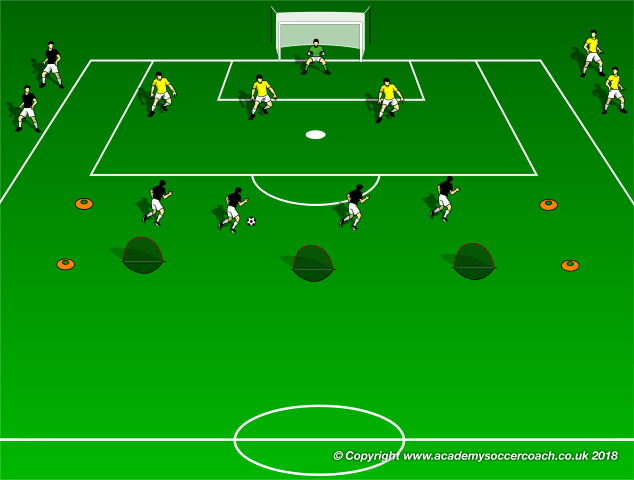
The Plus Minus Game
By Matthew Carroll –
Description: The plus minus game is a high intensity small sided game with built in rest periods for players. The purpose is to create a high level of intensity with a variety of numerical advantages and disadvantages.
Setup:A field is set up with the 18 then continues 30ft out. At the far end of the field three mini goals are set up. The defending team starts with 3 players and the attacking team with 4. On the side of the drill is a rondo with all of the reserve players.

Execution: The defending team attempts to score on one of the three goals, while the attacking team attempts to score on the net. If the attacking team scores an additional defender is added and an attacking player leaves the field.
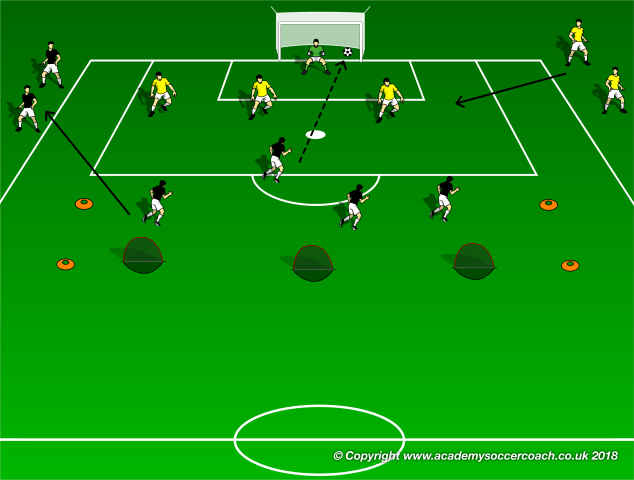
If the defending team scores an additional attacking player is added and a defender leaves the field. After the set time whoever has the greater plus minus wins.
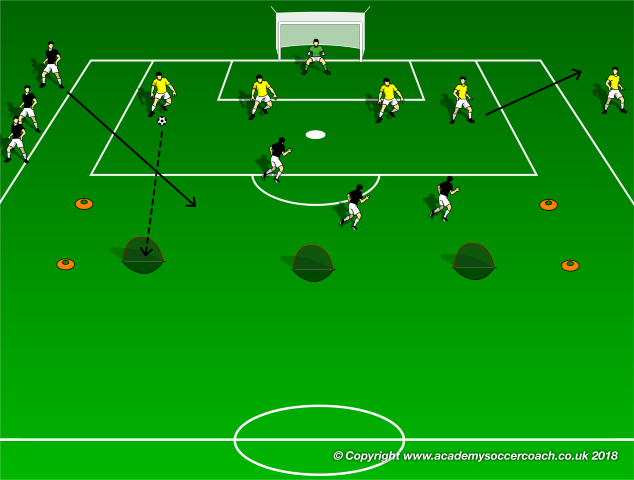
Variations: Number of starting players can vary, as well as what the subs on the sideline are doing.
By Matthew Carroll
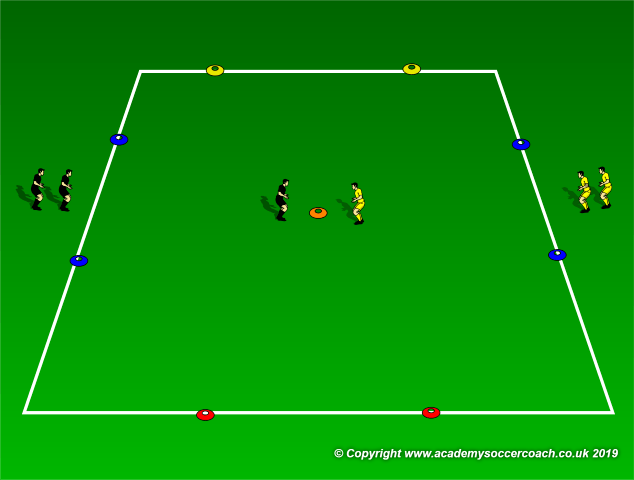
Sideways Transition
By Matthew Carroll –
Description: The Sideways Transition activity is designed to recreate the transition moment from a 50/50 ball.
Setup: A 25×25 grid is arranged with two full sized goals at either end arranged 15yds away from either end of the grid. Goalkeepers are placed in either goal. Teams are arranged into two teams, and then divided again so that there is four teams, two teams a piece wearing the same color bib. One of each of the colored teams is in the middle, while the reserves for each team are placed on the sides of the grids with no goals.
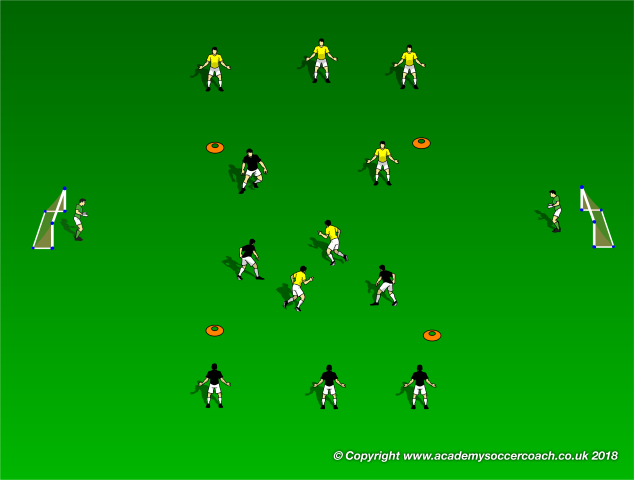
Execution:
Play starts with a goalie throwing a 50/50 ball into the grid. Players look to connect three passes together amongst their teammates to create scoring chances on either goal. The third pass of the combination play can be a through ball that goes out of the grid towards a goal. If the team out of possession wins the through ball they can play the ball back into the grid to a teammate or to the goalie for a restart. Any ball that goes out before a third pass is played a goalie restarts play with a throw into the grid.
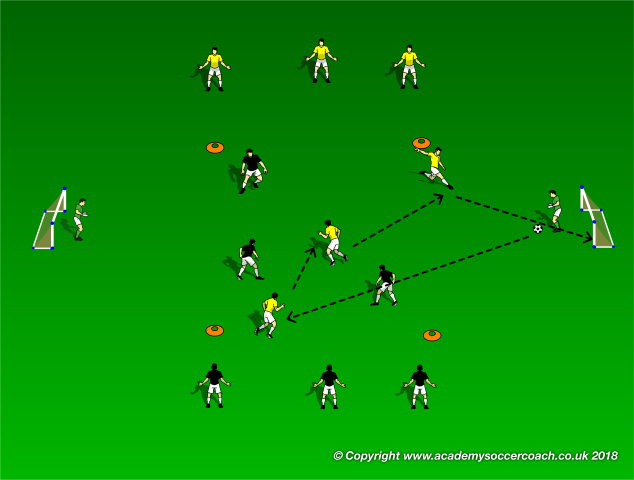
If a team scores they then stay on the field, and the team that was scored on is replaced by their reserves. If a team shoots and the ball goes over the bar they are replaced by their reserves. If no one scores for 90 seconds both teams are replaced by their reserves
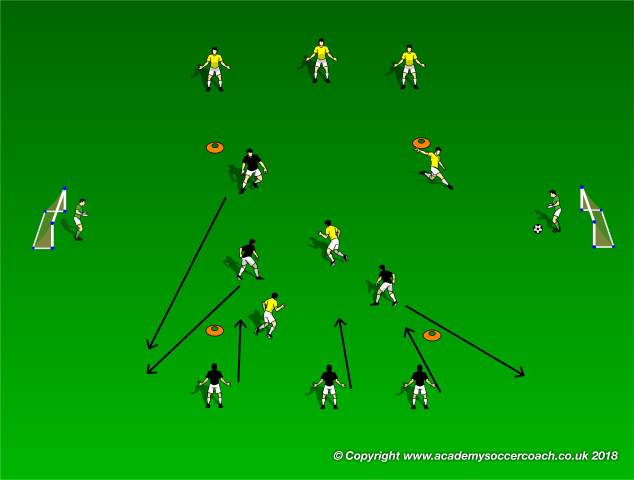
Variations: Numbers of players, time per rep, and size of the grid can all be altered
By Matthew Carroll
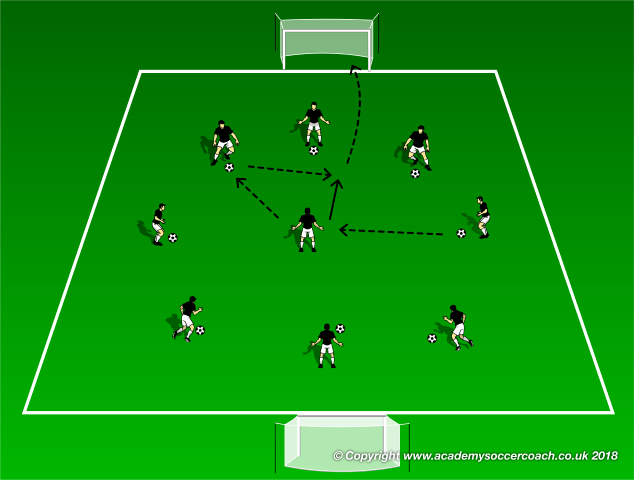
Two Man Rondo
By Matthew Carroll –
Description: The two man rondo is an activity designed to improve player’s vision and mental conditioning by creating a series of distractions that increase as the activity proceeds, but still requires all the base technical elements to be executed to procision throughout
Setup: Set up a normal rondo with every alternating player wearing a different colored bib. Give a ball to a player with one color big, and one to the other.
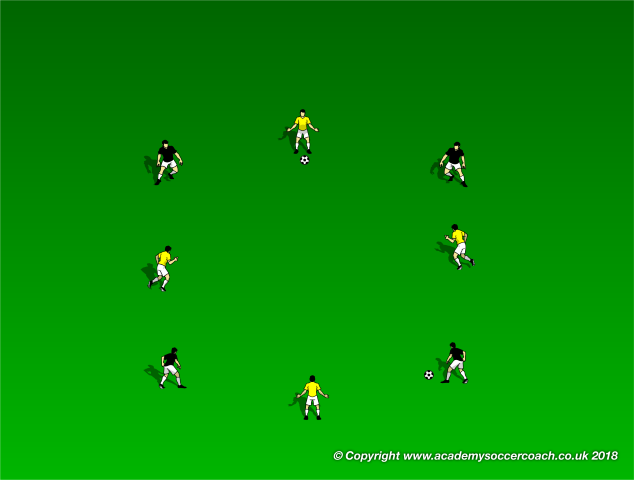
Execution: Begin the game as a normal rondo with the stipulation that the players cannot pass to the player on their team directly to the left and right of them, and must play either one or two touch. If the balls that are in play touch both teams need to do some sort of conditioning (push ups, sit ups, jumping jacks, etc.)
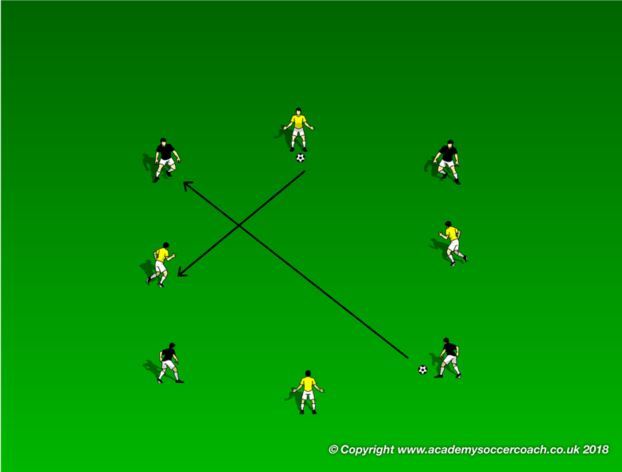
As the drill progresses and the players become more comfortable with the rhythm and technique add a player from each team in the middle. If the player in the middle wins the ball they should pass to their own team so that the team that won the ball now is possessing with two balls. Players on the outside of the rondo can only win possession of a ball if the ball is passed directly to them by the opposition.
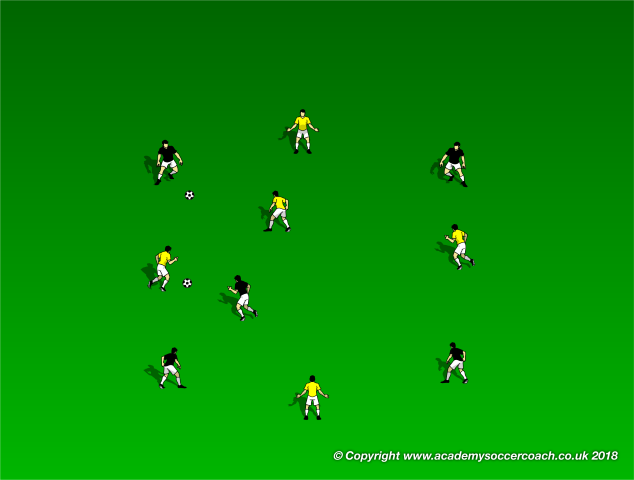
Variations:
To increase the hectic nature of the drill additional balls can be added, for example each team plays with two balls.
To create additional distractions a small tennis ball can be added that players must throw to each other. If the player with the ball receives a pass while holding the ball, or the ball is dropped or held for longer than three seconds the group as a whole must do some sort of conditioning
By Matthew Carroll
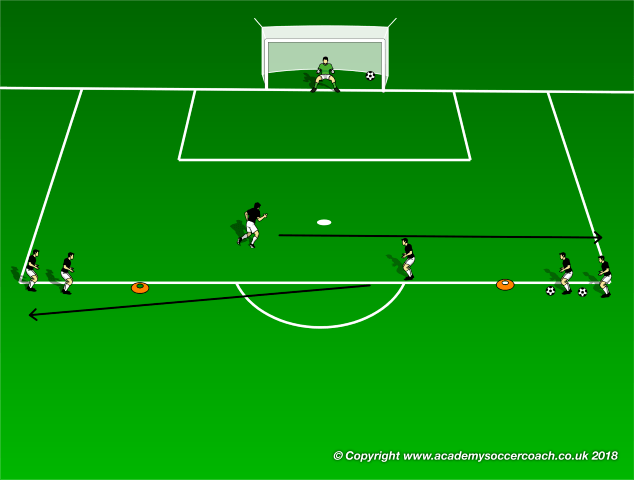
The Jermaine Jones Drill
By Matthew Carroll –
Description:
The Jermaine Jones Drill recreates the spectacular goal Jermaine Jones had in the 2014 World Cup for the US. It combines tight combination play in the box with realistic shooting opportunities from the top of the 18.
Setup:
Two lines are set up on the top of the 18, starting just wide of each 6 yard box (3 ft off). Balls are placed on one side of the line (whichever line is not shooting the ball)
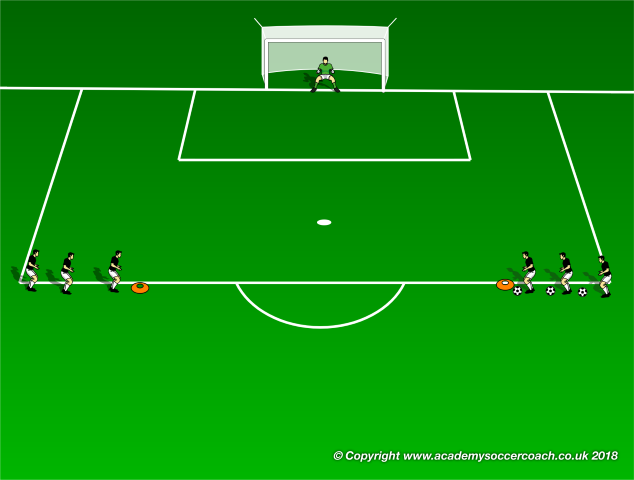
Execution:
The passing line lays off a ball to the shooting line who runs onto the ball and shoots, either first touch or with a short touch towards net. The players then jog to the back of the opposite line they came from and the next group repeats the process.
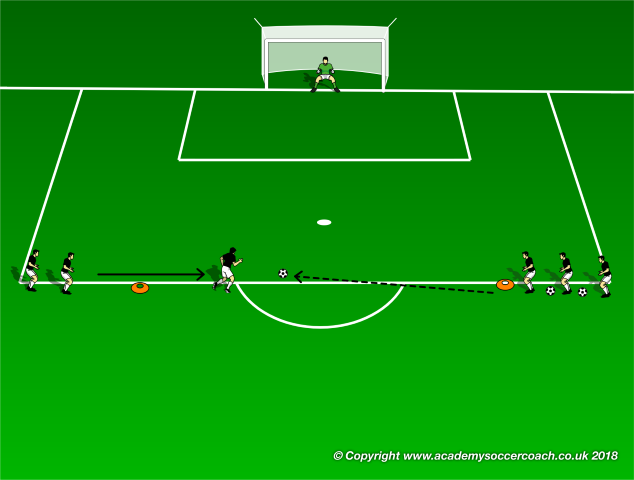
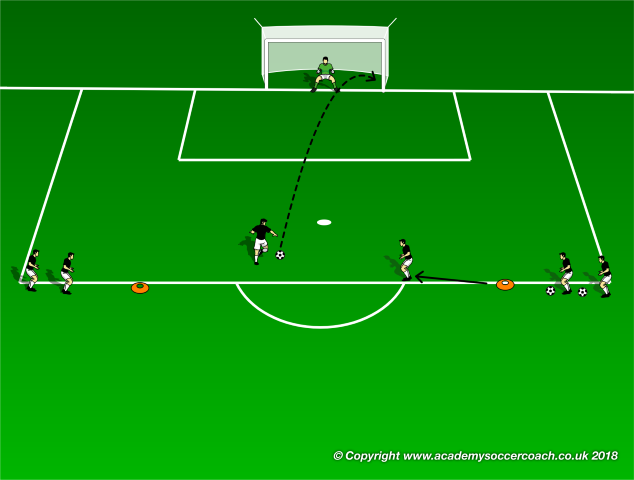

Variations:
Both lines can have balls and shooting side alternates
Passes can be played back and forth until a visual cue specifies that that particular pass will lead to a shot.
By Matthew Carroll

9 In the Middle
By Matthew Carroll –
Description:
The 9 in the Middle game is to recreate a team’s 9 (or 10) playing within the oppositions 6 5 and 4. The 9 plays as a target man who is receiving in the triangle and then redistributing to a “runner” that would be coming through to break the back line to create space for a shot or pass in the box.
Setup:
Set up a rondo with 3 defenders in the middle with one attacking player in the middle of them that group. Defenders should be set in a defensive triangle. Depending on the skill level and number of player the rondo size will vary.
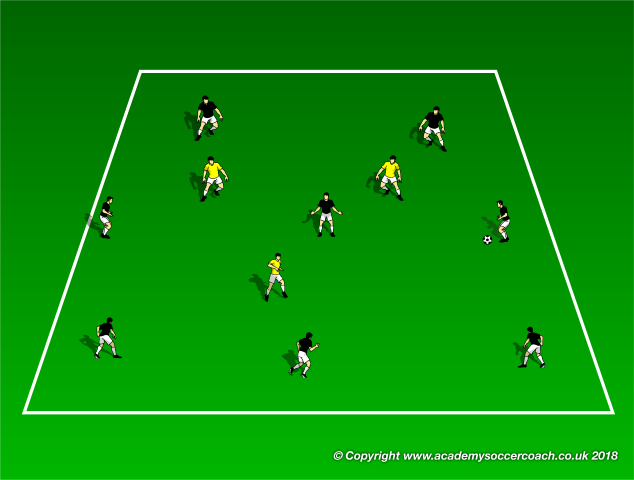
Execution:
Players on the outside attempt to play ball to the central player (the #9) who needs to then play a ball that breaks the triangle of the defending players. Balls should break one “line” between two defenders and the second pass should break a second “line” changing direction of the play.
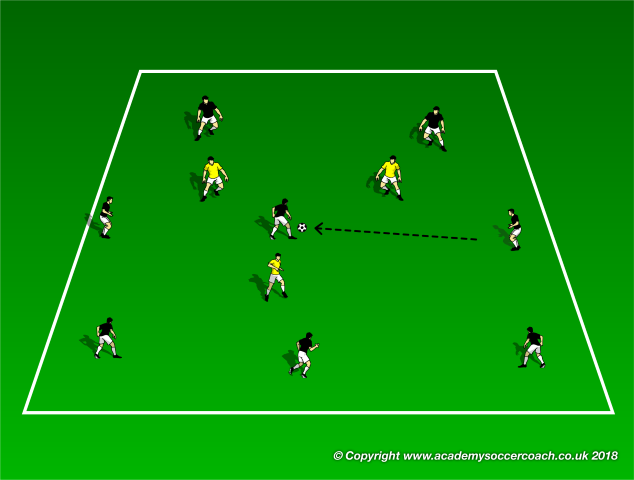
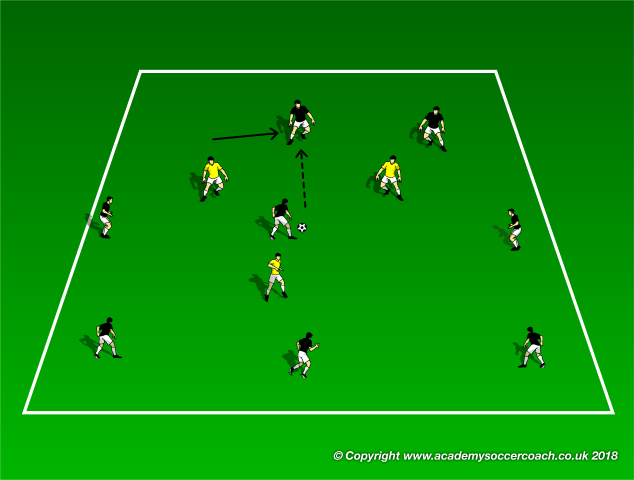
Variations:
Points can be added based on combinations of passes that break the line
Additional defenders can be added to press the outer circle
By Matthew Carroll
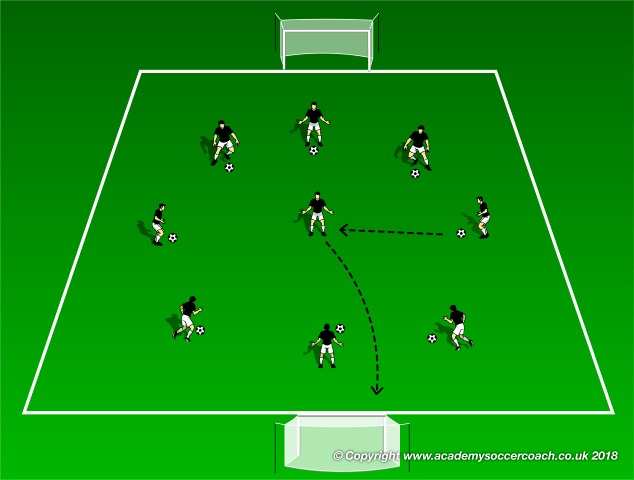
Juggle Circle Race
By Matthew Carroll –
Description:
The juggle circle race is a fun opening or closing activity in which players are tasked with team communication, juggling ability, and coordination challenges.
Setup:
Create 4-6 man teams Place cones starting from the top of the 18 to the halfway line. Each team circles up holding hands except for the one hand of the player with the ball. All parts of every player must be behind the 18 line.
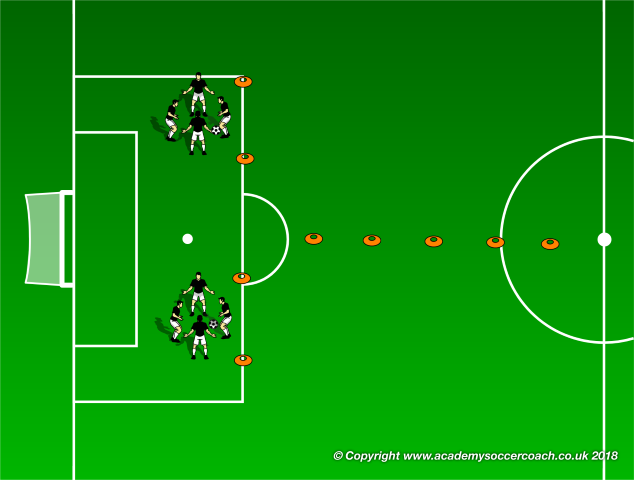
Execution:
Each team must juggle in a circle while holding hands and move from the end line to the halfway line.
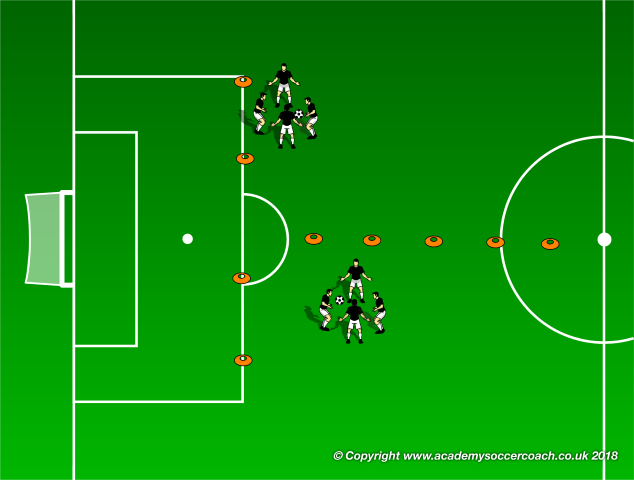
If they ball is dropped they must go back to the last cone the entire group moved past.
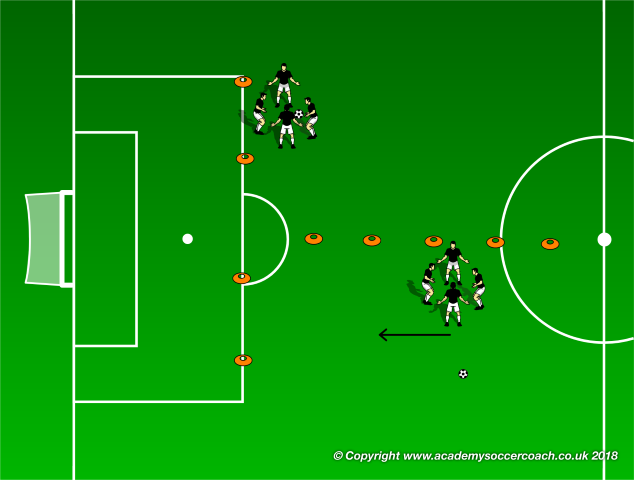
The winner is the first group to get their entire group past the halfway line
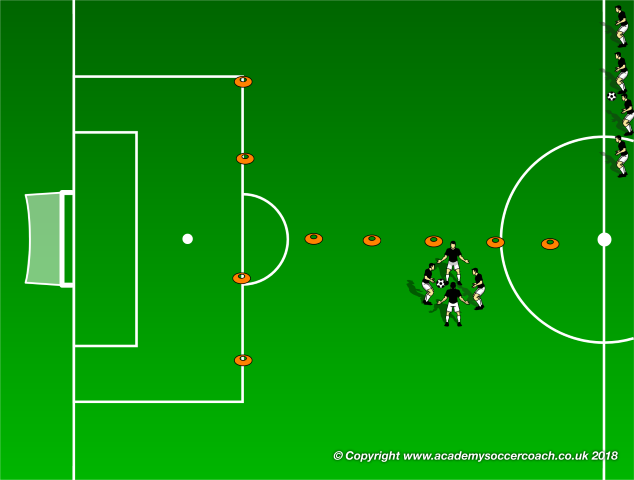
Variations:
Players can do some type of fitness activity until the ball is returned to the circle at which point the team is allowed to move forward again.
By Matthew Carroll
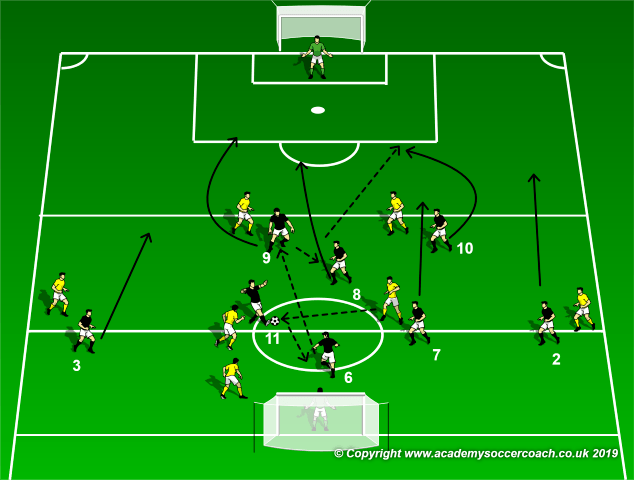
Press v Drop Game
By Matthew Carroll –
Description:
The purpose of the press v. drop game is to recreate game situations where there is an opportunity to press high up in the opponent’s half. If the the press is broken it also recreates the need to regain shape in the team’s own defensive half.
Setup:
Field is divided into three equal parts. Zone 1, Zone 2, and Zone 3. Goals and goalies are placed at either end of Zone 1 and 3. Balls should be placed into goals as all restarts come from goalkeepers.
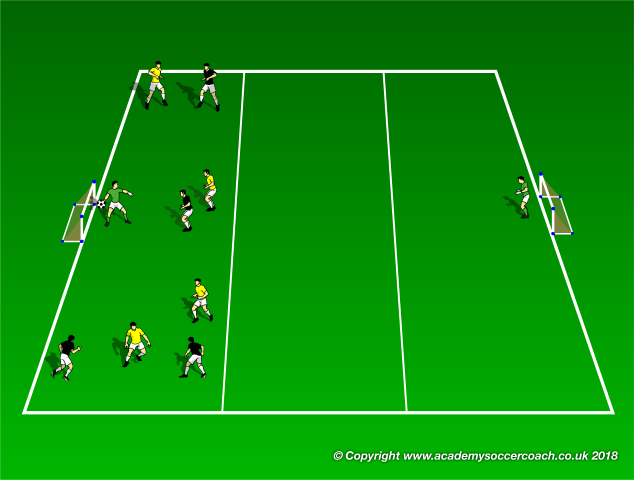
Execution:
The ball is played out from a goalie to start. If a team wins possession in their defensive third (as they do off the start) the team off the ball must press heavily.
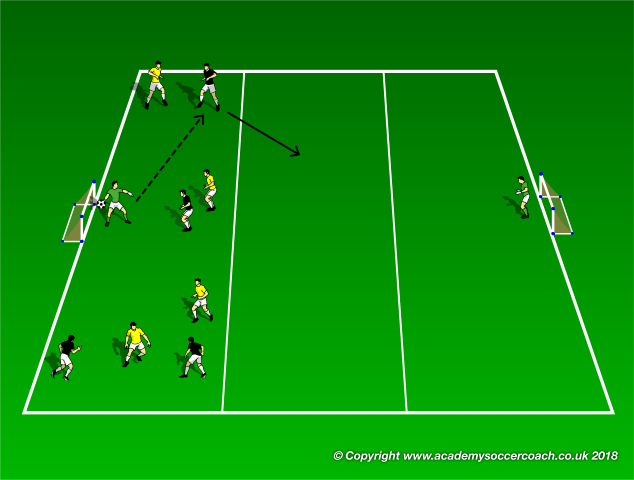
Their goal is to score off the press. If the team on the ball gets the ball into the middle zone they must complete 5 passes and the other team cannot defend them. The off the ball team must drop into their defensive third to try to set up a defensive shape.
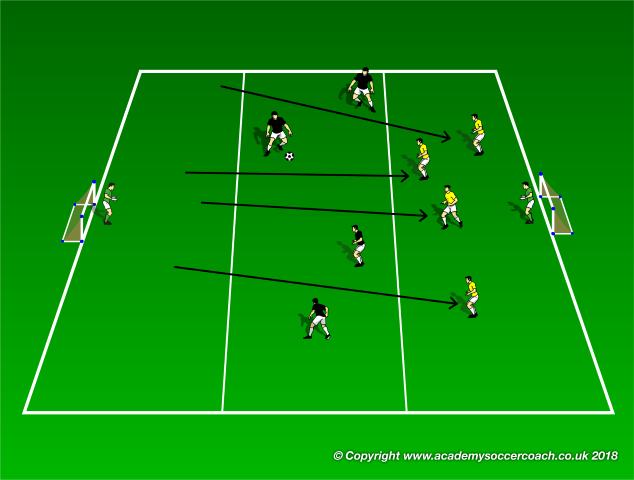
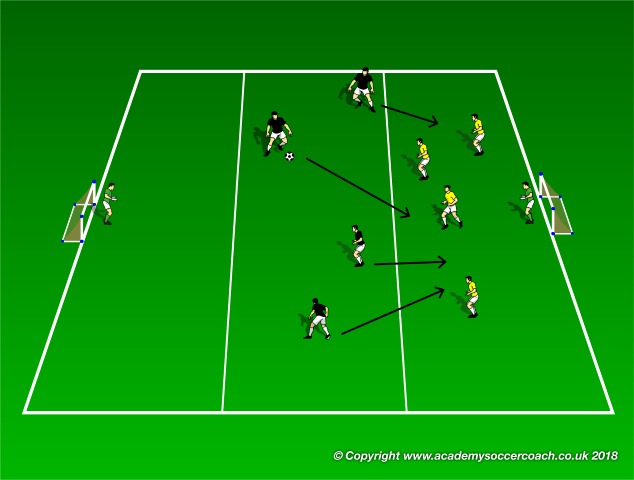
Any restart from the team in their defensive third cannot immediately go to the middle box via the goalkeeper to a player, a player must receive in zone ⅓ and then dribble it into zone 2.
Variations:
Zonal shape and challenge can vary
Throw ins and kicks can be introduced
By Matthew Carroll
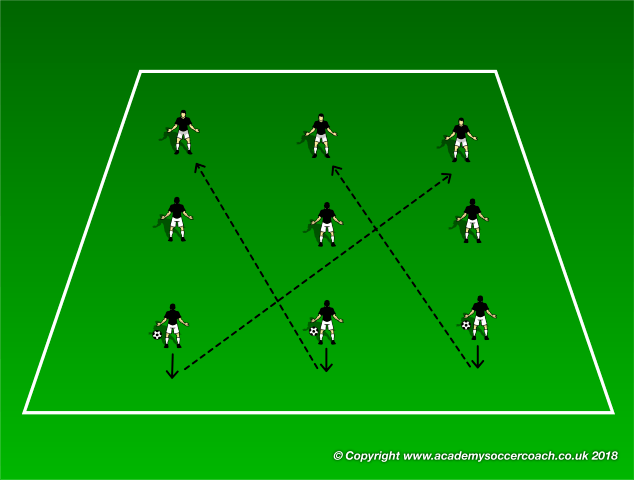
Check Your Shoulder Conveyor Belt
By Matthew Carroll –
Description:
The purpose of the CYS Conveyor Belt is to create a passing pattern that maximises touches on the ball, asks players to check their shoulders, and creates an atmosphere of awareness between players.
Setup:
9 players are set up 3 by 3 with a ball at top top of each grid.Players should be spaced about 15-20 feet from each other both ways
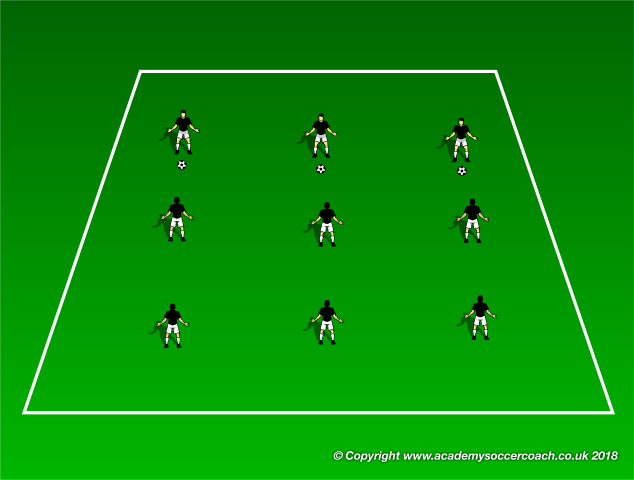
Execution:
The player at the top of the grid passes to the middle player. That middle player checks their should before the pass comes, and then again while the ball is in motion.
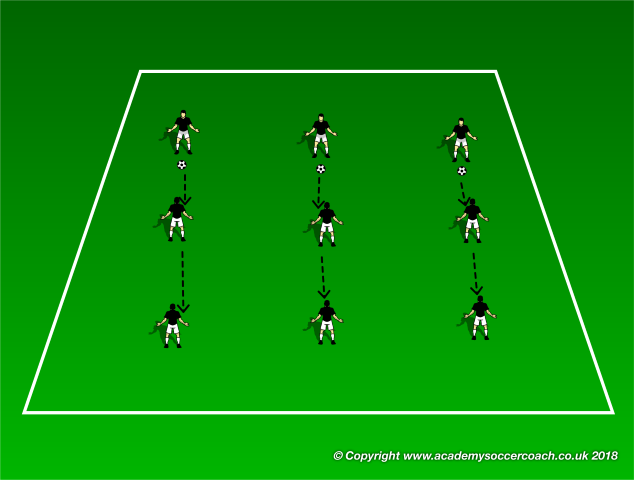
They then receive on the back foot, opening up to pass to player at the bottom of the grid who checks their shoulder twice, receives on the back foot, pulls a move to turn around, and passes to the player at the top of the next grid. The end player that receives resets by passing a lofted ball to the player at the top of the grid in the first line.
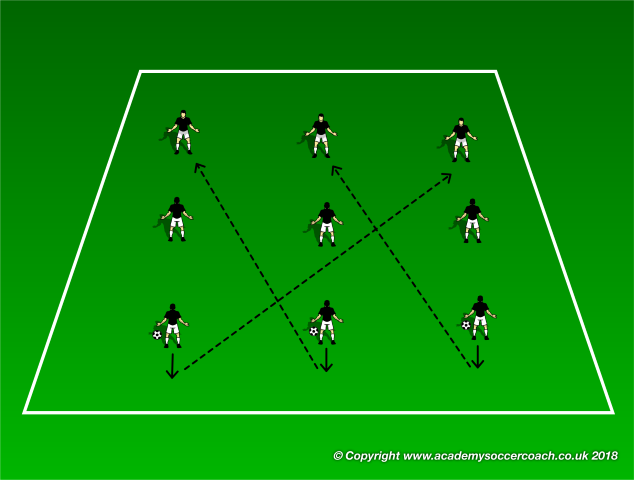
Variations:
Number of players, direction of play, amount of balls, and shape of grid can all vary.
By Matthew Carroll
